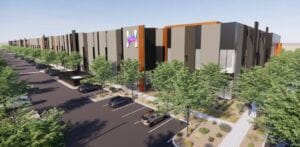There are no two investors that will own and operate a property the same way. It is absolutely possible for two investors to look at the same property and come up with two different NOIs. Note that both investors are right based on their style.
That’s why appraisers use comparable sales, replacement value and the income approach as part of a three-pronged method in estimating value. They make the appraisal representative of the market conditions and the typical requirements of investors and lenders active in the market.
We need to know the terms of the financing available; from that we can develop the loan constant. Using just the interest rate would indicate an interest-only payment and distort the overall capitalization process. The formula for developing a constant is:
Annual Debt Service / Loan Principal Amount = Loan Constant
The next step is to provide for the return on the equity. Start with the return you want on your money. Let’s say the cash-on-cash return you want is 20%.
It represents the cap rate to the equity position, and to keep things simple we will call it the equity constant. If an investor puts in $30,000 and requires a 20% pre-tax return, then his/her annual cash in the pocket after paying the mortgage (but before income taxes) would have to be $6,000. In this case, the equity constant is .20.
Each of these cap rates is then weighted based on the loan-to-value ratio of each of the debt and equity positions to build the “overall cap rate.” The formula looks like this:
(LTV debt ratio x mortgage constant) + (LTV equity ratio x equity constant) = derived cap rate
There are several factors that can influence the value of an income property both up and down. Some of the most important include deferred maintenance, security of the income stream (strength of the tenants and length of the leases), comparable sales in the area, general economic and market conditions and local market condition.
You can now see why it is so critical to verify existing income and expense before establishing value. I cannot stress enough the importance of performing thorough due diligence in commercial income properties.
Happy Investing!
[stextbox id=”grey”]These tips are provided by Pete Baldwin, designated broker and owner of Platinum Realty Network with offices in Scottsdale and Flagstaff, Ariz. With over 25 years of experience in business and real estate, Pete specializes in country club communities and second home investments, including large commercial portfolios. He also owns an Arizona branch of a family-owned, Montana-based company Baldwin Log Homes – Arizona Territory and has become the area leader in full- custom, handcrafted log homes in Northern Arizona. For more information, please visit www.PeteBaldwin.com.[/stextbox]




